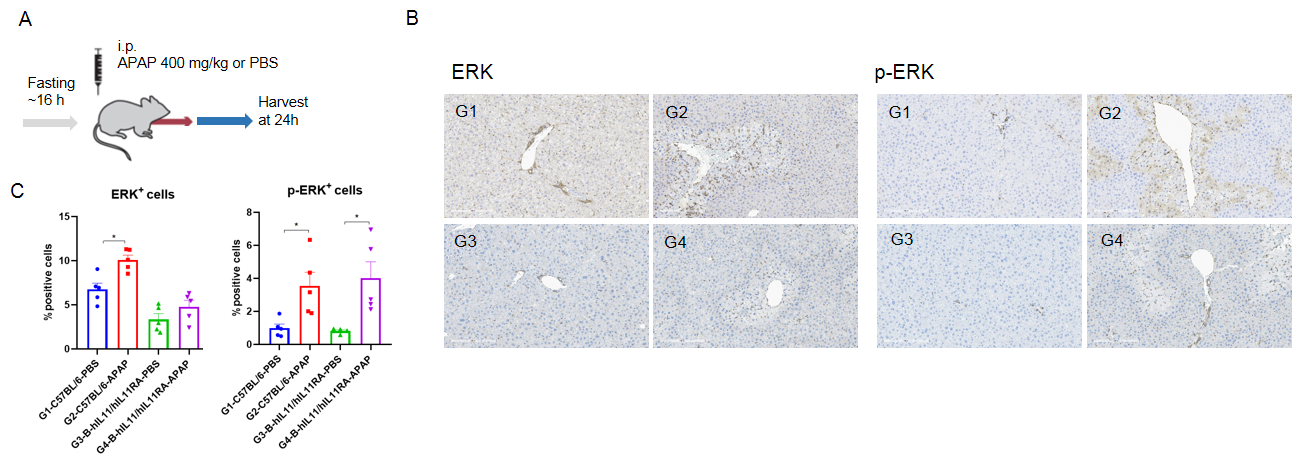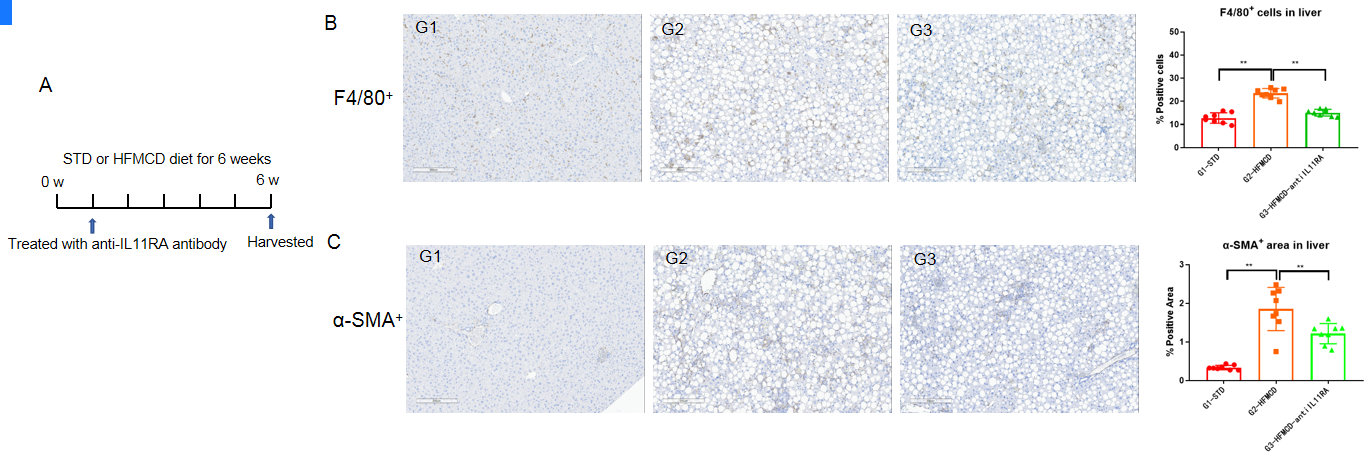B-hIL11/hIL11RA mice
| Strain Name |
C57BL/6-Il11tm1(IL11)Bcgen Il11ratm1(IL11RA)Bcgen/Bcgen
|
Common Name | B-hIL11/hIL11RA mice |
| Background | C57BL/6 | Catalog number | 111865 |
|
Aliases |
IL-11(AGIF, interleukin 11); IL-11RA(interleukin 11 receptor subunit alpha)
|
||
Functional analysis

Functional analysis in APAP-induced liver damage in male B-hIL11/hIL11RA mice.(A) Schematic showing the process of APAP-induced liver damage in B-hIL11/hIL11RA mice. B-hIL11/hIL11RA mice (male, 8 weeks, n=5) were fasted overnight and inducted with APAP(400 mg/kg) for 24 h. Liver tissue were collected for functional analysis. (B) Representative IHC images of liver (200 X). (C) Quantification of ERK and p-ERK positive cells from hepatocytes.The IHC results showed that p-ERK increased significantly after APAP induction, and the increase degree was similar to that of wild mice. Values are expressed as mean ± SD. *p<0.05.
In vivo efficacy of anti-human IL11RA antibody with HFMCD induced NASH model

Anti-human IL11RA antibody inhibited the liver damage in male B-hIL11/hIL11RA mice. (A)Schematic showing the process of treatment in B-hIL11/hIL11RA mice. B-hIL11/hIL11RA mice were first randomly separated to receive STD or HFMCD diet for 6 weeks (n=8). The anti-hIL11RA antibody(provided by the client) treatment started when the mice were fed with different diets for 1 week. The liver tissues were collected for analysis. The markers of liver damage, F4/80+ positive cells(B) and α-SMA+ positive areas(C) were increased in the model group(G2) compared to the STD group(G1), indicating that the NASH mouse model was successfully established with B-hIL11/hIL11RA mice. F4/80+ positive cells(B) and α-SMA+ positive areas(C) were reduced in the anti-human IL11RA antibody treated male mice group compared to the model group(G2), indicating that anti-human IL11RA antibody were efficacious in inhibiting liver damage in male B-hIL11/hIL11RA mice. Values are expressed as mean ± SEM. STD, standard diet; HFMCD, high fat methionine and choline deficient diet.











 京公網安備: 11011502005564號
京公網安備: 11011502005564號